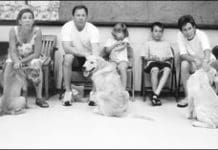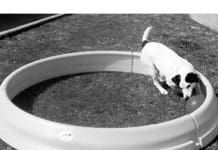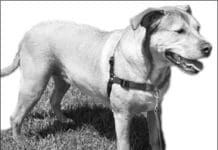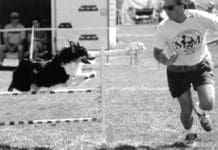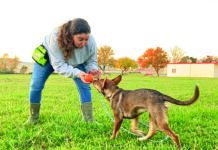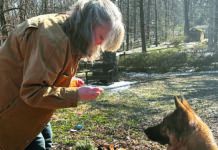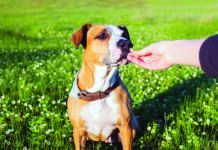Home Search
dog obedience training - search results
If you're not happy with the results, please do another search
Get Your Puppy Enrolled Into Puppy Training School As Early as Possible
The optimum time to start a puppy’s education is as early as possible: about eight weeks of age. With food treats and clickers as the primary tools in our training arsenal, we can help owners start educating their youngsters at an optimum training age, before pups have had several months of reinforcement for unwelcome and inappropriate behaviors. Paradoxically, some veterinarians still counsel owners to wait until their new puppies are six months old and “fully vaccinated” to take them to training class. Unfortunately, this advice is just as outdated as the use of choke chains in puppy classes! It’s true that you shouldn’t wantonly expose your pup to high-risk dog populations; you should never take him to a dog park, or let him play with stray dogs on the street. But the risk of contracting an infectious disease in a controlled setting, with other healthy puppies, is quite low.
The Tools That Make Dog Training a Breeze
Blushing brides used to come to their new marriages with a hope chest and a trousseau – a collection of the basic necessities for setting up a new household. It occurred to us that dogs should come to their new homes with a trousseau, too – containing everything dog and owner need to lay the foundation for a successful lifetime relationship. We put our minds to the task, and came up with the following collection of items that should be in every dog owner’s hope chest.
Words Matter: Respectful Dog Training Language
Why the words you use make a difference in your relationship with your dog – and perhaps even the success of your dog training program.
Training a High-Energy Dog to Calm Down
and now offers a calm sit or down when he wants something
Teach Your Dog to Fetch By Training Your Dog to Love Retrieval
we start with shaping that behavior and backchain to the completed "Fetch" behavior.üGradually
Fluency and Generalization in Dog Training
Fluency and generalization training methods prepare your dog to respond and behave correctly in ANY situation. In dog training, generalization means that your dog can apply a concept to many situations; he knows that Sit!" means he should sit whether he's home
Leashes, Collars, Harnesses: Best Gear for Positive Training
One bright spring Sunday, my husband and I took a motorcycle trip through Virginia, stopping in the dog-friendly town of Leesburg for lunch. As we ate I watched a steady stream of leashed dogs walk by our restaurant window. Before long I noticed a strange consistency: every single dog was wearing a prong collar. The sun dimmed a little for me, because I cannot imagine a training situation for which I would be willing to use a prong collar - and I certainly wouldn't use one as an everyday dog-walking tool. But the collars appeared to be commonly accepted and used in that community. A roomful of dog trainers will never agree on the best equipment for walking, training, or exercising a dog. If you restrict membership in the room to positive" trainers you'll find more agreement
Canine Agility Training: The Ultimate Team Sport
By now, if you're into dogs, you've probably heard about agility. Maybe you've even seen it in action or tried it with your dog. Agility is one of the fastest growing dog sports in the world, and with good reason it's fun! Of all of the dog things I've done
Tail-Wagging Training
Training, says Massachusetts dog trainer Donna Duford, should be fun, not work. Her seminars are such upbeat, tail-wagging events that the dogs seem to be having a party. Look closer and you’ll see a serious class, with participants taking notes as Duford reviews the laws of learning and defines classical conditioning, operant conditioning, positive and negative reinforcement, positive and negative punishment, continuous and variable reinforcement schedules, and other fundamentals of behavioral training.
Daily Practice Makes for Perfect Dog Recall Training
Coming when called – a “recall” as it’s often known in dog-training circles – is arguably the most important behavior you can teach your...
Positive Reinforcement Dog Training Through Food
Take a moment to ponder a miracle: We can reach across the great species divide and convince a dog to do something utterly unnatural...
Positive Reinforcement Dog Training Without Treats
I use treats when I train. So do my clients. Now that positive reinforcement training has a 25-year-plus track record in the dog world (supported...


